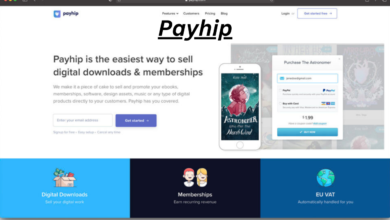Toast Payroll vs. Traditional Payroll Solutions Which One is Right for You?

Payroll management can be a daunting task for any business, whether you’re running a small café or managing a large restaurant chain. With so many options available, finding the right payroll solution is crucial to keeping your employees happy and ensuring compliance with regulations. Two popular choices on the market today are Toast Payroll and traditional payroll solutions.
But how do you decide which one is best suited for your needs? Is it worth jumping into an all-in-one system like Toast Payroll, or should you stick with the tried-and-true methods of traditional systems? This blog will explore both options in detail, helping you navigate the complexities of payroll solutions. As we dive into their features, benefits, and considerations, you’ll gain valuable insights that can steer your decision-making process. Let’s get started!
What is Toast Payroll?
Toast Payroll is a modern payroll solution designed specifically for the restaurant industry. It integrates seamlessly with Toast’s point-of-sale system, allowing businesses to manage their entire workforce from one platform.
This tool simplifies payroll processing by automating tasks like tax calculations and paycheck distribution. Its user-friendly interface makes it easy for managers to access employee information and track hours worked.
One of its standout features is real-time reporting. Establishments can get insights into labor costs and employee performance at any moment. This helps managers make informed decisions quickly.
Additionally, Toast Payroll offers compliance support tailored to local regulations, easing the burden on restaurant owners who often juggle multiple responsibilities. With this solution, operators can focus more on serving customers rather than getting bogged down in paperwork.
Traditional Payroll Solutions Explained
Traditional payroll solutions involve manual processes and software systems that have been the backbone of business payroll for decades. Typically, these methods require a dedicated team to manage employee data, calculate wages, withhold taxes, and ensure compliance with labor laws.
Businesses often rely on spreadsheets or outdated software. This can lead to errors in calculations or missed deadlines. Time-consuming tasks like printing checks or preparing tax forms add layers of complexity.
While traditional methods may seem familiar and stable, they lack the automation found in modern solutions. Consequently, businesses might struggle with efficiency as they juggle multiple responsibilities alongside payroll management.
Moreover, reliance on paper documents increases the risk of losing vital information. Security becomes an issue when sensitive data is not stored securely or encrypted properly. These challenges make it essential for companies to evaluate their current payroll practices critically.
Features and Benefits of Toast Payroll
Toast Payroll is designed specifically for the restaurant industry, making it a tailored solution. Its integration with other Toast products streamlines operations seamlessly.
One standout feature is its automated tax calculations. This saves business owners from potential errors and penalties that come with manual entries.
Employee self-service tools empower staff to access their pay stubs and update personal information easily. This promotes transparency and reduces administrative workload.
Moreover, Toast Payroll offers real-time labor reporting. Managers can track hours worked, overtime, and tip distributions effectively, ensuring compliance with labor laws.
The platform also simplifies onboarding new employees with intuitive workflows that guide managers through necessary documentation.
These features work together to enhance efficiency while minimizing headaches associated with payroll processing in the fast-paced restaurant environment.
Features and Benefits of Traditional Payroll Solutions
Traditional payroll solutions offer a sense of familiarity. Many businesses have relied on these systems for years, creating a trusted framework for managing employee compensation.
A key feature is their robust reporting capabilities. Business owners can generate detailed reports to help track expenses and analyze labor costs effectively. This data-driven approach aids in making informed financial decisions.
Another benefit is compliance support. Traditional payroll providers often stay updated with changing tax laws and regulations, reducing the risk of costly penalties.
Additionally, many traditional solutions provide personalized customer service. A dedicated representative can assist with inquiries and ensure smoother operations during payroll cycles.
Ease of integration into existing accounting software is another advantage. Businesses can maintain their established practices while enhancing functionality without starting from scratch.
Factors to Consider When Choosing a Payroll Solution
When selecting a payroll solution, several factors come into play. First, consider your business size and growth potential. Different solutions cater to varying employee counts and scalability needs.
Integration is another crucial aspect. Ensure the payroll system seamlessly connects with your existing accounting software and HR tools. This will save time and reduce errors.
User experience also matters. A user-friendly interface can make onboarding smoother for your team, while complex systems may lead to frustration.
Cost is often a significant factor too. Compare pricing models among different options, keeping in mind hidden fees or additional costs that might arise as you expand services.
Customer support should not be overlooked. Reliable assistance can be invaluable when navigating challenges or unexpected issues with the payroll process.
Conclusion: Which One is Right for You?
When deciding between Toast Payroll and traditional payroll solutions, it’s essential to assess your specific business needs. Both options come with their unique features and benefits.
Toast Payroll shines in its integration capabilities, particularly for businesses in the food service industry. Its user-friendly interface streamlines payroll management while providing real-time insights into labor costs. This can help you make informed decisions quickly.
On the other hand, traditional payroll solutions offer robust functionality that may be better suited for larger organizations or those requiring more complex payroll configurations. They often provide a wider range of customizations, which can be advantageous if your company has specific requirements.
Consider factors like budget, scalability, ease of use, and customer support when making your choice. Each solution has its strengths; the right one will depend on what aligns best with your operational goals and growth plans. Weighing these aspects against how they resonate with your business model will guide you toward a decision that supports both efficiency and effectiveness in managing employee compensation.

